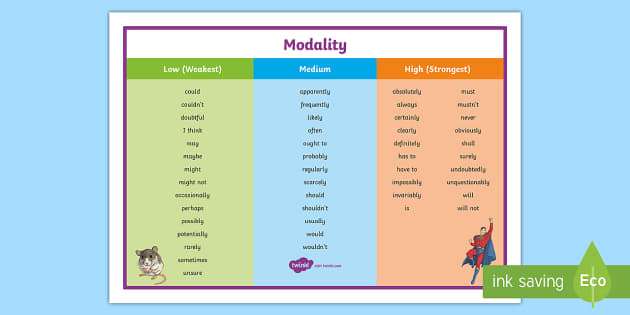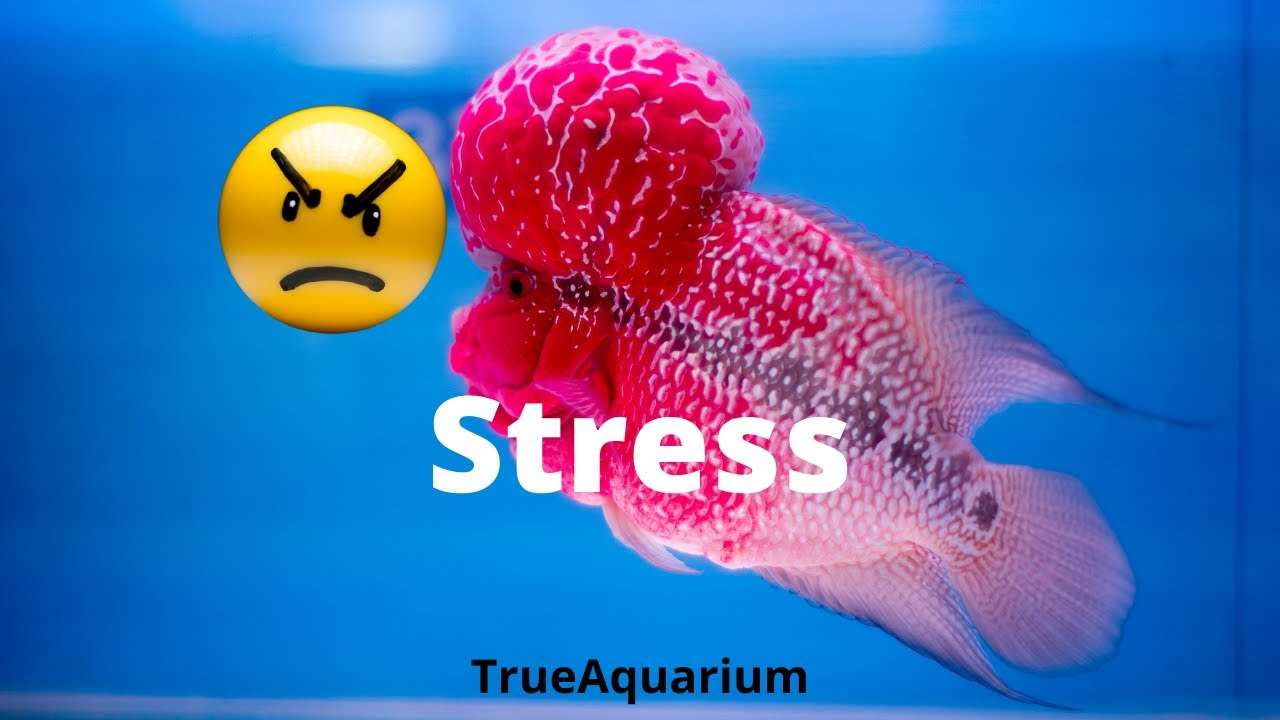Activity 2: possible impossible certain
Practice using different phrases and show how the sentence changes depending on if it’s possible, impossible or certain, example:
- we go out. (point to CERTAIN) We’ll go out.
- we always stay at home. (point to IMPOSSIBLE) We can’t always stay at home.
- we go to the cinema. (point to POSSIBLE) We might go to the cinema.
Using A3 sheets or IWB with possible, impossible, certain in three columns groups of students within a time frame write a possible sentence then an impossible and a certain statement. Look at which modal words are included in them.
Activity 3: partner share (advanced)
Students are paired. One student from each pair starts a sentence using a noun (with an article, determiner, and so on) or pronoun subject then two or more of the modal words from the resource below. For example:
- The essential ingredient certainly must not …
The second of the pair then concludes the sentence creating an interesting or funny sentence. For example:
- … be left out of the dish or disaster will occur.
Students keep tally marks of each sentence and note their favourite one which is shared with the class after five minutes of the activity. The pair with the most tally marks wins.
Activity 4: those are the rules (advanced)
Ask students to work in groups. Give each group the name of a place without showing them to the other teams (for example, library, swimming pool, office, school, bus, amusement park) and ask them to write rules for this place (using must, mustn’t, have to and don’t have to and so on.) When they finish, groups read out their rules and the others guess the place.

The word modality is often thrown around when discussing persuasive writing techniques but perhaps you are unsure what the word actually means or you are looking for resources to help incorporate more high modality words into a piece of writing.
Look no further! We’ll be taking a look at what modality is, its importance in persuasive writing, the different types of modality and sharing some tips for editing for modality — there are even some examples included to assist you!
Ready to improve your writing with modality? Let’s get started!
What is Modality?
Modality refers to a set of verbs that provide information about the degree of obligation or certainty involved in an action. While modality can be conveyed through the choice of words, sentence structure and grammar when ‘modality’ is discussed in persuasive writing for Kindergarten to Year 6, this is usually in reference to word choice of verbs.
Modal verbs and expressions are often used when expressing an opinion or attitude about a possible fact or to control a possible action. They help to convey the presenter’s attitude towards the topic they are writing about.
There are two main ways that modal words may be utilised. Firstly, it may be used to convey how certain something is in the past, present or future. It is used to predict or speculate about a fact, helping to measure degrees of certainty and possibility.
Secondly, modal verbs can also be used to control or direct action like giving or refusing permission, talking about obligations or necessities.
Why is modality important in persuasive writing?
The purpose of a persuasive text is to convince the reader that a certain stance is better or to change their own perspective and to adopt the one that is being proposed. While this may be achieved through facts, evidence, statistics, anecdotes and expert opinions — how this information is conveyed is also very important. This is where modality comes in!
Low modality language implicitly conveys uncertainty. This will make a piece seem unconvincing to the reader as it would appear that the writer is either unsure about the topic they are writing on or that they are not fully convinced of the stance that they have chosen to take in writing their persuasive piece.
In contrast, high modality language carries confidence and certainty with it. High modality words help to assert and emphasise facts. When utilised well they may even stir up strong feelings within the reader, making the reader more likely to be persuaded by the arguments being put forward.
Thus for persuasive writing it is recommended that high modality language is used throughout the piece due to its ability to help convince readers of the arguments being put forward and the certainty conveyed through the tone.
Low Modality Words
Low modality words convey less certainty and obligation, generally, this makes a piece of writing sound uncertain and doubtful.
Examples
MayCanCouldMight PossiblySometimesProbablyLikely UnlikelyModeratelyAlmostSomewhat PartlyGenerallyMainlyPotentially MaybePerhapsUsuallyGenerally I thinkOccasionallyTends toRarely SlightlyScarcelyQuiteWould
It may snow tonight.
I would be happy.
Perhaps the introduction of conservation efforts may help endangered species.
Medium Modality Words
Medium modality words sit in between low and high modality words. They are not completely certain, nor are they completely doubtful.
If high modality was definite, and low modality is impossible; medium modality words convey a chance that something may happen.
Examples
ShouldApparentlyRegularlyOstensibly FrequentlyPresumablyHopefullyOften
It should snow tonight.
I am often happy.
It is likely that conservation techniques could help endangered species.
High Modality Words
High modality words convey certainty and higher degrees of obligation. When high modality words are used, confidence and intensity are conveyed to the reader making the language used in the writing seem more persuasive.
Examples
MustShallWillNeed DecidedlyUnquestionablyIsAbsolutely AlwaysCertainlyClearlyDefinitely RequiredNeverObviousNecessary CompulsoryObligatoryEssentialHave to EvidentAbove allOught toVital IntegralImportantUndoubtedlyTotally ExtremelyThoroughlyNeverBelieve ConvincedPositivelyUndeniablyUltimately
It will snow tonight.
I shall be happy.
It is evident that the introduction of conservation techniques is essential to helping endangered species.
Editing Modality
The first draft of a piece of persuasive writing is often concerned with the structure and the order in which evidence is presented. Modality is usually implicitly utilised but not consciously or with intent.
Thus, when editing it is often valuable to observe how low or medium modality words can be transformed into high modality words and language.
High modality words are more effective in convincing readers of the stance being advanced in a persuasive writing piece. This is because the arguments are delivered with confidence and certainty or is able to appeal to the emotions of the reader through the words used.

Step 1: Identifying modality
When looking over a piece of writing, start with observing when words in the examples being given above have been used — you may underline or highlight them so that they are easy to identify when you edit later on.
Examples:
Uniforms worn in school may help to reduce evidence of economic disparity between students.
Assigning homework to children in primary school could lead to unnecessary stress and may reduce the time available for skills and experiences that are non-academic but might be useful for life experience.
Fossil fuels occasionally lead to negative impacts on our natural environment.
Step 2: Replacing or deleting modality words
There are two ways to replace modality. The first is to replace low and medium modality words used to convey your argument and to replace them with high modality words.
The second is to ensure that low and medium modality words are used to present arguments from the other side that you are disputing.
Interestingly, if low or medium modality words are used in a sentence, one of the solutions to making the sentence sound more certain and confident is to simply remove the word rather than replacing it with a high modality verb.
Examples:
Uniforms (may) reduce evidence of economic disparity between students.
Assigning homework to children in primary school will lead to unnecessary stress and (may) reduce the time available for skills and experiences that are non-academic but (might) remain useful for life experience.
The use of fossil fuels always leads to negative impacts on our environment.
Step 3: Considering non-verbs in conveying modality
While this is usually trickier to identify and edit, things like sentence structure, adverbs, nouns, and adjectives also have an impact on modality.
The easiest way to do this is to read a sentence out loud and ask yourself if it sounds confident or if there may be a more direct way to convey the argument — if there is rewrite the sentence and this will help increase the modality for your persuasive writing piece as well!
Examples:
Bad consequences → devastating consequences
Low-stress → absence of stress or stress-free
Believe → know
Weird → ridiculous/absurd
There you have it!
Now that you know all about how you can improve your persuasive writing by using powerful high modality words, it’s time to put it into practice!
Have another writing assignment? Here are our other writing guides:
If you’re on the hunt for other helpful resources, check out some below:
Looking for some extra help for your child with English?
We have an incredible team of English tutors and mentors!
We offer tutoring and mentoring for students in Years K-12 in a variety of subjects, with personalised lessons conducted one-on-one in your home or at one of our state of the art campuses in Hornsby or the Hills!
We’ve supported over 8,000 students over the last 11 years, and on average our students score mark improvements of over 20%!
To find out more and get started with an inspirational English tutor and mentor, get in touch today or give us a ring on 1300 267 888!
Tiffany Fong is currently completing a double degree in Media and Communications with Law at Macquarie University. She currently contributes to the university zine, Grapeshot where she enjoys writing feature articles, commentary on current affairs or whatever weird interest that has taken over her mind during that month. During her spare time, Tiffany enjoys reading, writing, taking care of her plants or cuddling with her two dogs.



